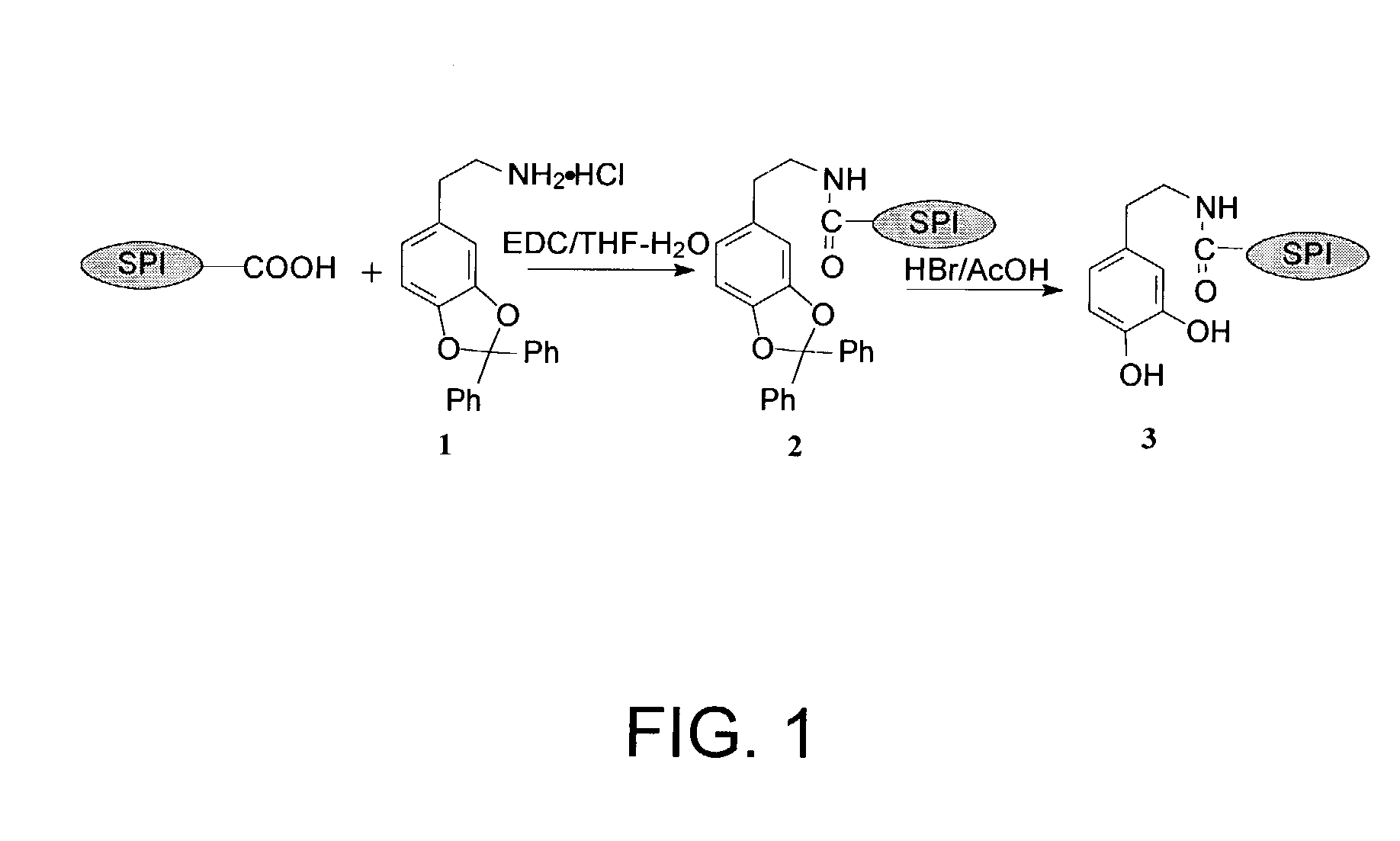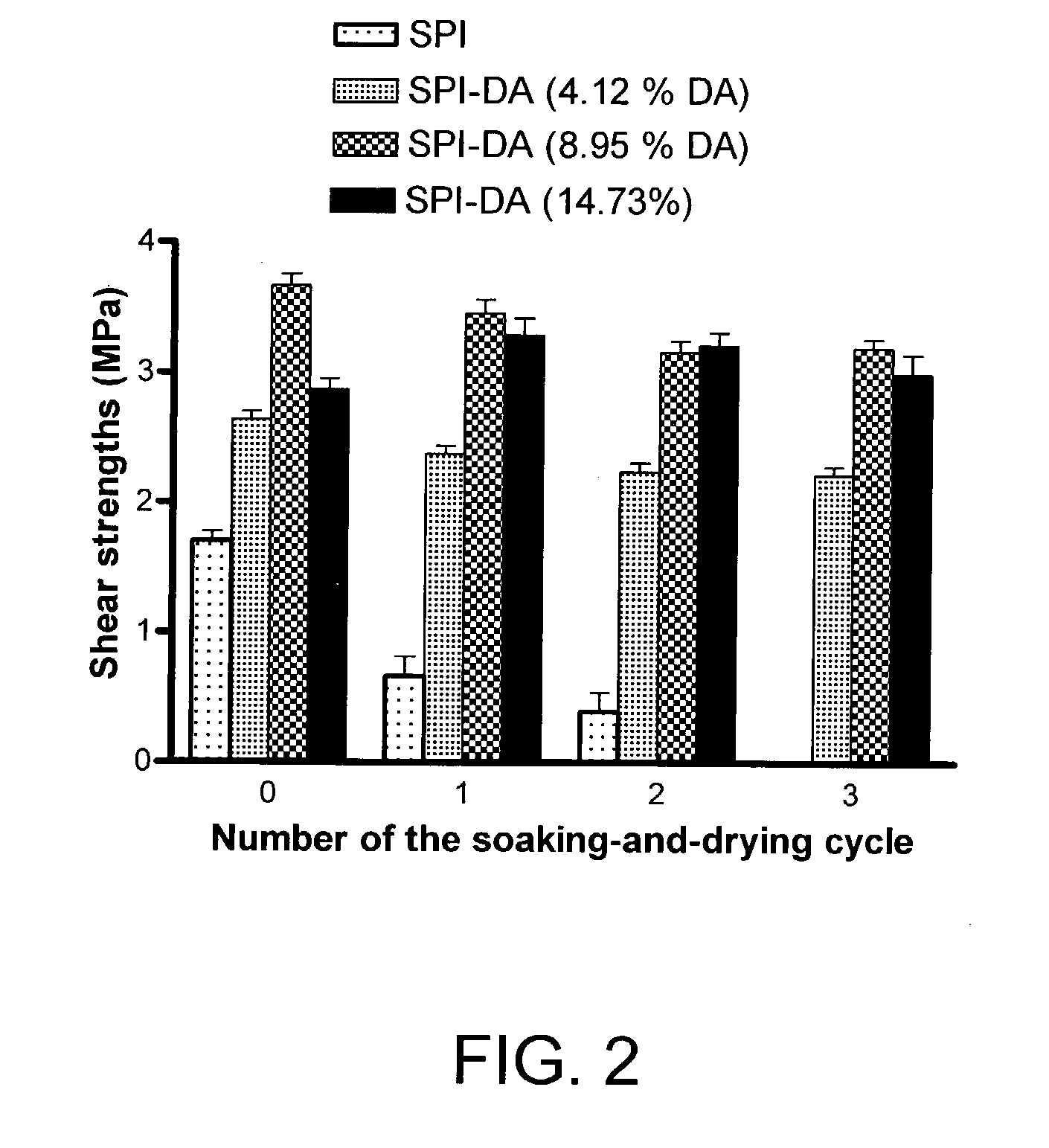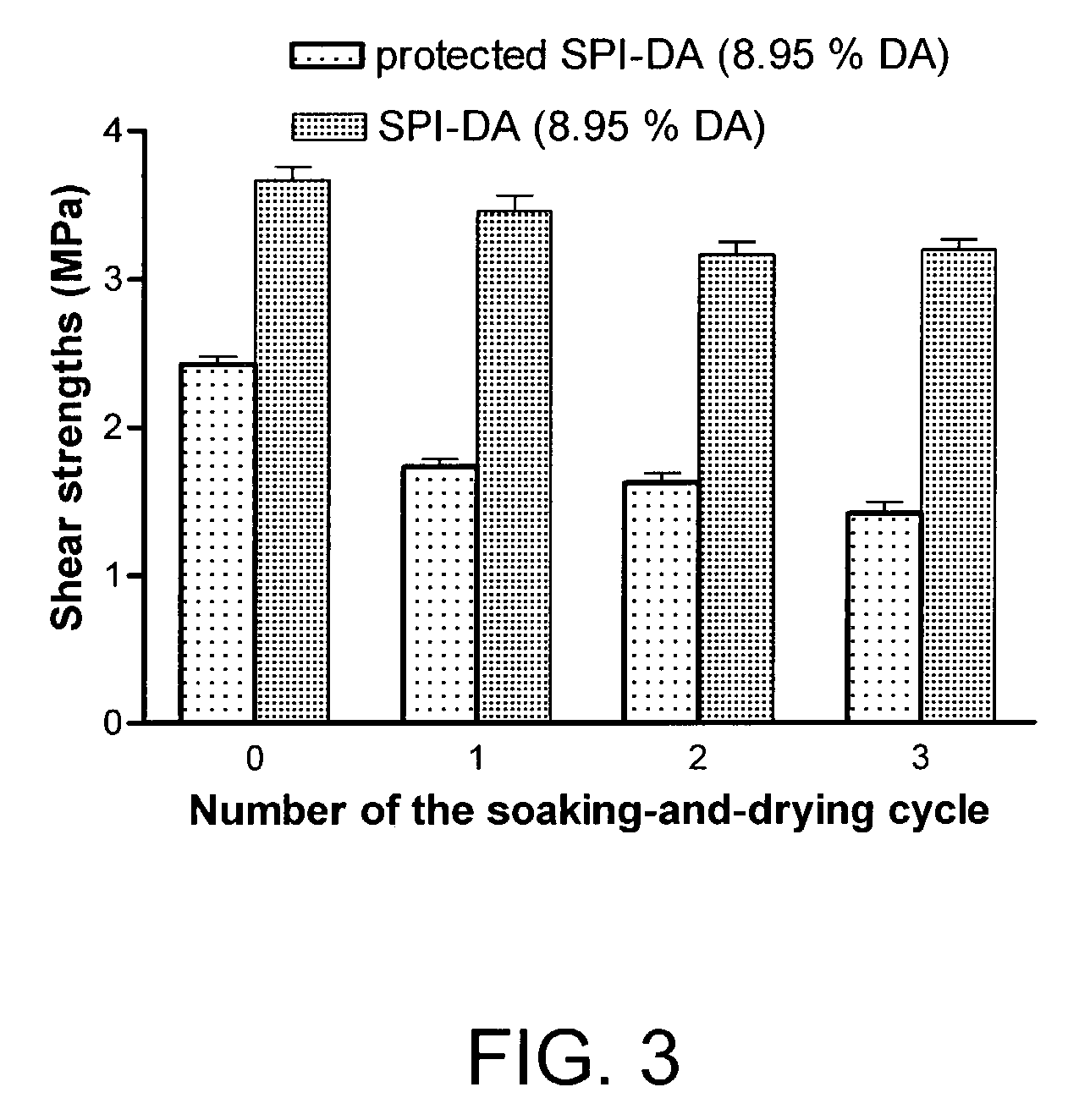Modified protein adhesives and lignocellulosic composites made from the adhesives
a technology of lignocellulosic composites and modified proteins, which is applied in the direction of peptides, vegetable seeds, plant/algae/fungi/lichens ingredients, etc., can solve the problem of limited natural petroleum reserves
- Summary
- Abstract
- Description
- Claims
- Application Information
AI Technical Summary
Benefits of technology
Problems solved by technology
Method used
Image
Examples
example 1
Preparation of Alkali-Modified Soy Protein Isolate
[0042]SPI powder (10 g) was mixed with 140 ml of distilled water at room temperature and then stirred for 120 minutes. The pH value of the mixture was then adjusted to 10 using sodium hydroxide (1 M). The mixture was subsequently mixed in a shaker at 50° C. and 180 rpm for 120 minutes. The insoluble portion was removed through filtration and the aqueous SPI solution was freeze-dried.
example 2
Preparation of Phenolic Hydroxyl-Augmented SPI-Dopamine
[0043]A reaction synthesis for preparing a phenolic hydroxyl-augmented SPI-dopamine is shown in FIG. 1. A mixture of dopamine (DA) (1.0 g) and dichlorodiphenyl methane (3.16 g) was slowly stirred at 1 90° C. After the reaction started, as evidenced by rigorous gas evolution, the reaction mixture was stirred rapidly at 190° C. for 6 minutes. The mixture was cooled to room temperature and then washed by diethyl ether. The product ((1)—O, O′-diphenylmethyl-dopamine hydrochloride) was crystallized from methanol and ethyl acetate (1.36 g, 73 percent).
[0044]To a suspension of the alkaline SPI of Example 1 (1.0 g) in 40 ml of tetrahydrofuran (THF)-H2O (1:1, v / v) was added a solution of compound 1 (2.07 g) in THF-H2O (1:1, v / v) (20 ml). The resulting mixture was adjusted to a pH value of 5.5. A solution of 1-(3-dimethylaminopropyl)-3-ethylcarbodiimide hydrochloride (EDC) (1.8 g) and THF-H2O (1:1, v / v) (20 ml) was added to the reaction m...
example 3
Preparation and Testing Wood Composites
[0047]A solution of water and the modified SPI of Example 2 (6:1 wt. ratio) was applied to one surface of a maple veneer strip (100×60 mm, 0.6 mm thick). About 2.5 mg modified SPI was applied to the maple veneer. The bonding area was 2×2.5 cm. Two pieces of maple veneer strips were stacked together and hot-pressed at 120° C. for 10 minutes. The applied pressure was 20 kg / cm2.
[0048]Lap-shear strengths of the resulting wood assembly specimens were tested using an Instron TTBML testing machine with a crosshead speed of 1.0 mm / minute. The maximum shear strength at breakage was recorded. In water resistance testing, the specimens were soaked in water at room temperature for 24 hours then dried at room temperature in a fume hood for 24 hours and the shear strengths of the specimens were measured. The soaking-and-drying cycle was repeated and the shear strengths were measured after each soaking-and-drying cycle.
[0049]The lap-shear strength results are...
PUM
| Property | Measurement | Unit |
|---|---|---|
| weight percent | aaaaa | aaaaa |
| weight percent | aaaaa | aaaaa |
| temperature | aaaaa | aaaaa |
Abstract
Description
Claims
Application Information
 Login to View More
Login to View More - R&D
- Intellectual Property
- Life Sciences
- Materials
- Tech Scout
- Unparalleled Data Quality
- Higher Quality Content
- 60% Fewer Hallucinations
Browse by: Latest US Patents, China's latest patents, Technical Efficacy Thesaurus, Application Domain, Technology Topic, Popular Technical Reports.
© 2025 PatSnap. All rights reserved.Legal|Privacy policy|Modern Slavery Act Transparency Statement|Sitemap|About US| Contact US: help@patsnap.com



